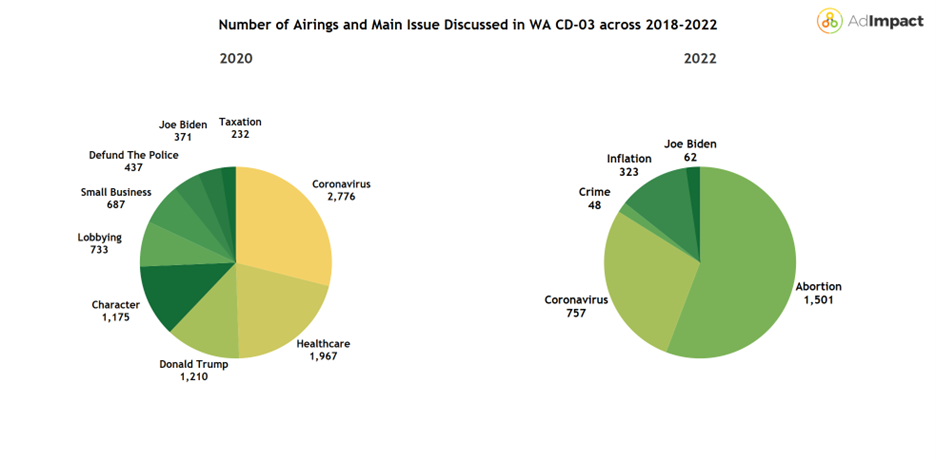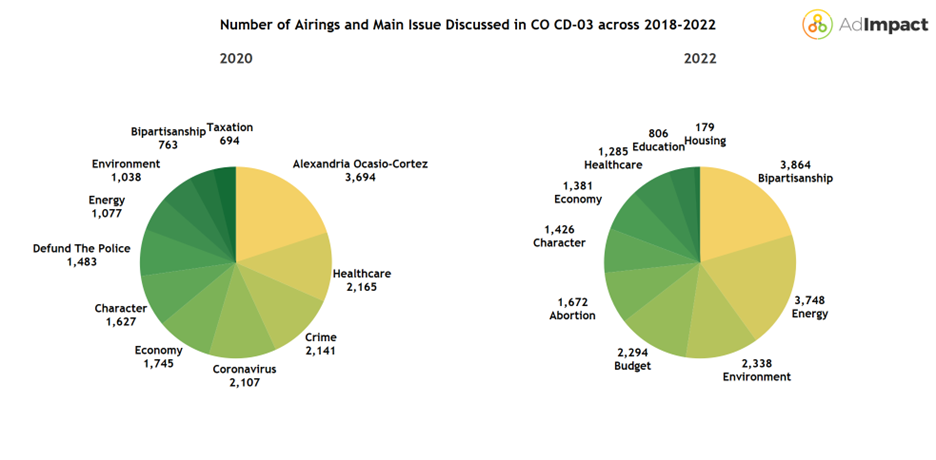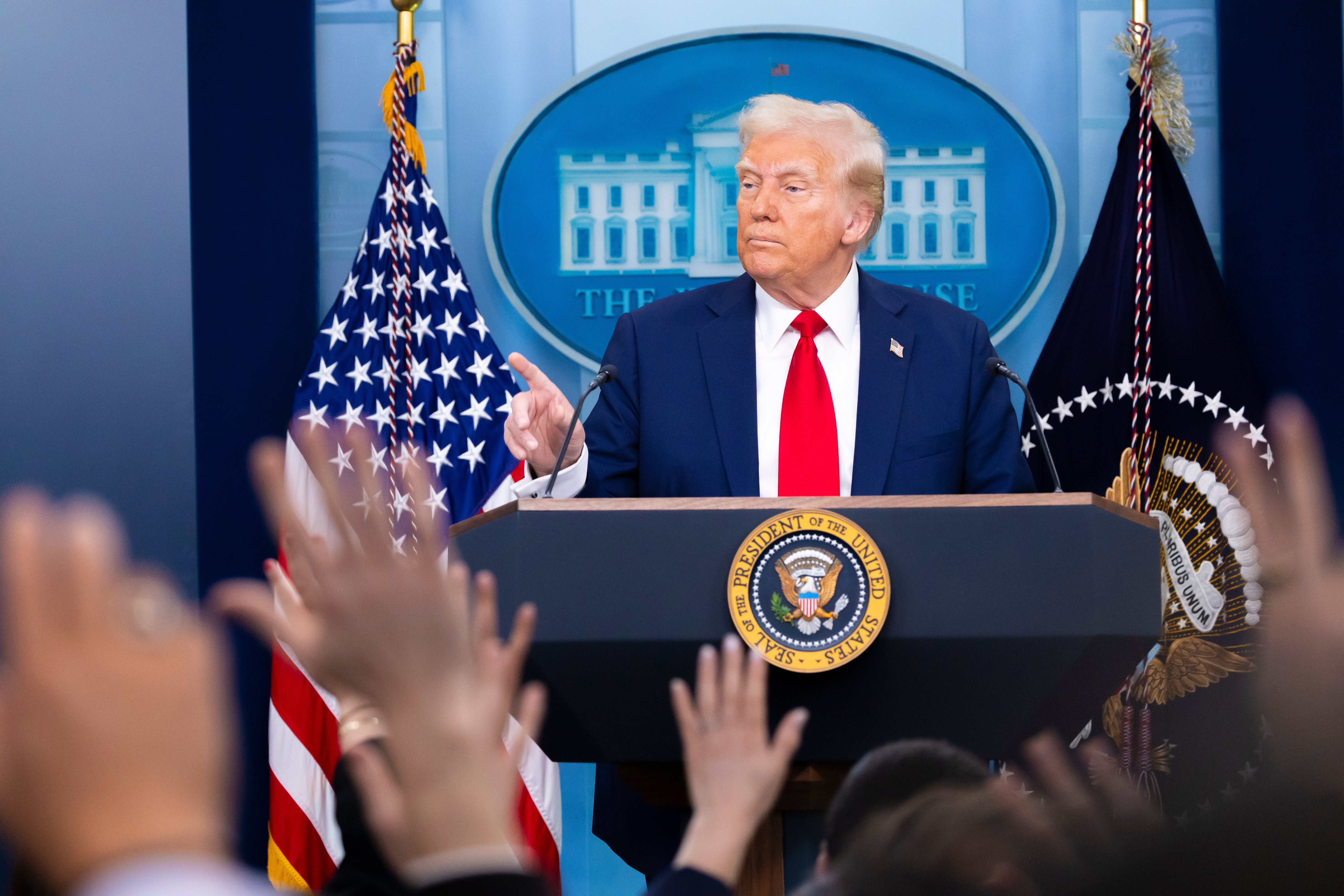Written by Ethan Mort
In 2022, Nevada saw competitive Senate, gubernatorial, and House elections, as well as several expensive down ballot races. As a result, Nevada saw more political advertising spending than ever before. In 2022, Nevada saw $366M spent across the state’s general and primary elections. This total greatly outpaced the 2018 Midterms, as that total was $199M. In 2020, ad spending in Nevada was $74M, with 93% of that attributed to the Presidential election. This cycle saw an 88% increase in political advertising spending from 2018 in the state. Senate and gubernatorial race spending nearly doubled, while House spending nearly tripled.
The vast majority of Nevada political advertising spending falls within two markets: Reno and Las Vegas. This cycle, Las Vegas saw a total of $245M and Reno saw $58M. Las Vegas saw the fourth most spending in the nation, trailing only Los Angeles, Phoenix and Atlanta. Broadcast spending made up over 66% of total political spending in the state, while cable made up 15%. Digital spending was third, making up 13%. Of the $50M in digital spending, $27M was on ATV.

Senate Political Advertising Spending
In 2022, Nevada saw the third most expensive general election in the nation. The state’s Senate general election saw $161M in political advertising spending. The top spender in the race was incumbent Democratic Senator Catherine Cortez Masto, who spent $32M. Cortez Masto outspent her opponent, Adam Laxalt 3:1 during the general. Republican issue groups such as Senate Leadership Fund, Club for Growth, and One Nation spent more than Democratic issue groups combined. Overall, Democrats held a $13M spending advantage in this election. Cortez-Masto would go on to win the election by a margin of 0.5%, or less than 5,000 votes, making it the closest Senate race in the 2022 cycle.
Out of the nine states that GOP group Senate Leadership Fund spent in this cycle, Nevada saw the sixth most money. The $28M Senate Leadership Fund spent in Nevada was dwarfed by their $43M in the Georgia general (and an additional $12M for the runoff) and $42.8M in Pennsylvania. The remaining three states ahead of Nevada were all states Republicans had to rapidly play on the defensive--$36M in North Carolina, $32M in Ohio, and $28.5M in Wisconsin. Meanwhile, this Senate race was the third largest investment for the Democrat group Senate Majority PAC—only behind the $64M and $52M they spent in Georgia and Pennsylvania’s Senate races.

Cortez Masto spent $33M out of the $42M total of candidate or coordinated buy spending, meaning 78% of all candidate spending came from her campaign. This discrepancy is important as candidates have less expensive political ad-buy rates and greater control over the design of the ad than issue groups.
The two campaigns focused on vastly different issues in their ads. Based on the total number of airings, the most discussed issues in this election were abortion, inflation, each candidate’s character, crime, and energy. Overall, 20% of all ads aired mentioned abortion. Twenty-seven percent of all ads supporting Cortez Masto mentioned abortion while just 3% of pro-Laxalt ads mentioned abortion. Here is an example of a Cortez Masto ad attacking Laxalt’s previous comments on Roe and Wade.
The second most discussed issue in this election’s ads was inflation. Pro-Laxalt advertisers focused heavily on inflation—with 46% of their ads mentioning inflation versus just 3% of pro-Cortez Masto ads. Here is an example of Laxalt blaming Cortez Masto for inflation due to her pro-Biden voting record.
Both candidates utilized Spanish in their ads to court the Hispanic vote in Nevada. Laxalt released an ad in Spanish that highlighted the issues of crime and inflation within the state, with the ad ending in Laxalt speaking in Spanish. Cortez Masto released an ad in Spanish that claimed Laxalt opposed abortion and ObamaCare.
Both candidates, as well as the issue groups supporting them spent on Hispanic broadcast and radio stations across the state. There was a total of $12M spent on Hispanic advertisements, with pro Cortez Masto advertisers making up 73% of that total.
The House
Democrats’ redistricting gamble in Nevada seemed to have paid off. Tasked with the responsibility of redistricting within the state, Nevada Democrats opted to move some of the Democratic Clark County territory of NV CD-01 into 3 and 4. This was thought to be a gamble by many, as while it made two more Congressional districts friendlier to the Democrats, it also opened up the opportunity for Republicans to sweep Nevada’s Congressional delegation. Republicans saw this opportunity and pounced on it, as evident in a NRCC fundraising email when NRCC Spokeswoman Torunn Sinclair announced "Every House Democrat in Nevada is vulnerable". The NRCC and the Congressional Leadership Fund spent in NV CD-01, 03 and 04, making each of those races competitive. The Democrats' attempt to redistrict Nevada ended up making all of their House races competitive—and the spending reflected it. We saw a total of $61M spent on the House in Nevada. The seat that saw the most spending was NV CD-03, with a total of $27.6M.

In Nevada’s third Congressional District, incumbent Democrat Susie Lee defeated April Becker within a margin of less than 5,000 votes. Both candidates saw a massive influx of issue group spending supporting them. The Congressional Leadership Fund spent $10.5M supporting Becker, a total higher than the combined totals of $7.4M that House Majority PAC and DCCC spent supporting Lee. This race was the biggest investment that CLF made in Nevada this year. Due to this investment, NV CD-03 was the only competitive seat in Nevada in which the Republicans held a spending advantage—albeit narrow with $100k more spent than Democrats. Democrats managed to keep the gap close thanks to Lee’s own candidate spending—the most out of any Nevada Congressional candidate this year, and the DCCC’s $4M investment in the race—the highest spend from DCCC in Nevada this cycle.
NV CD-01 saw the second most spending, with nearly $20M spent on political advertising for the race. Unlike in CD-03, Democrats held a spending advantage in this race by $1.6M. House Majority PAC invested $5M into the race, which pitted Democratic incumbent Dina Titus against Republican Mark Robertson. Titus was victorious, with nearly a 4% margin. This was the closest election NV CD-01 has seen in years, with Titus winning by nearly 30% in 2020, and 36% in 2018. Additionally, this was the seat’s first general election since 2016 with advertising spending. As stated earlier, a reason for this sudden competitive nature for this district was the fact that State Democrats in Nevada redistricted 1, 3 and 4 in such a way that split 1’s Democratic strongholds across 3 and 4.
In NV CD-04, Democrats had an overwhelming $8.1M spending advantage over the Republicans. Democratic incumbent Steven Horsford defeated Sam Peters with a 3% margin, or 6,000+ votes. The Congressional Leadership Fund did not invest in this race. Republican issue group investment in this race remained low compared to the other Congressional districts. The NRCC only spent $300K on a coordinated buy with Peters and Morning with America PAC spent $900K on cable and satellite ads attacking Horsford.
Across all three competitive House districts, Democratic candidates outspent Republican candidates. Across the three competitive Congressional races, Democratic candidates made up 90% of all candidate spending, giving them the advantage of the aforementioned better adrates over issue groups.

The Gubernatorial
Nevada’s gubernatorial election proved to be an exception in a national trend. Incumbent Democratic governor Steve Sisolak was the only incumbent governor defeated in the 2022 midterms. He lost to former Clark County sheriff Joe Lombardo by a 3.1% margin. With his background, one might have expected Governor-Elect Lombardo to have heavily campaigned on the issue of crime—as other Republicans around the country did. In actuality, only 18% of all ad airings supporting Lombardo mentioned crime. Surprisingly, it was Sisolak who more commonly utilized the issue of crime in his ads. Crime was a theme in 20% of all ads supporting Sisolak. Sisolak attacked Lombardo’s resume as sheriff: in one ad he described Lombardo as weak on sexual violence and as someone who covered up police misconduct. The most referenced issue in pro-Sisolak ads was abortion, which was mentioned in 44% of all such ads. Here is an ad in which Sisolak claimed Lombardo supported a ban on abortion. In a rare occurrence this election cycle, Lombardo went on air on the defensive about his stance on abortion. In one ad, Lombardo claimed Sisolak was lying about his stance on abortion, and that he does not support a ban on contraceptives and a no exception abortion ban.
Republican’s top issues in this election were inflation and character attacks on Sisolak. An ad released by the RGA attacked Sisolak for being a “pay to play politician” and highlighted the state’s issue with inflation. In this ad released by the Lombardo campaign, Lombardo highlights his sheriff experience with various police imagery while labeling Sisolak as corrupt. The Sisolak campaign would move on the defensive and defend Sisolak’s record as governor while lobbing corruption accusations against Lombardo.
While not being anywhere near a top issue for either side of this election, there were political ads about Coronavirus. The RGA released an ad claiming Nevadans had not yet recovered from “Sisolak’s lockdowns”. While not directly mentioning Coronavirus, Sisolak released an ad highlighting the state’s recovery.
Similar to the Senate race, appeal to Hispanic voters also played a role in each campaign’s political messaging. Sisolak released an ad highlighting a discussion about his plans with a potential voter in Spanish. RGA Nevada released an ad in Spanish blaming Sisolak for inflation within the state and attacking him as being corrupt.

Issue groups drove spending for this race, as the primary drivers were the Pro-Sisolak group Stronger Nevada, and the Pro-Lombardo RGA Nevada PAC. Stronger Nevada was the top spender this election, spending $19.6M, while RGA Nevada PAC spent $16.2M. When including RGA-linked groups, such as ACC Nevada, the RGA spent a total $21M on this race. This was the RGA’s biggest expenditure this election cycle. Overall, $74M was spent on the general election. The Democrats outspent the Republicans $42.5M to $32.2M.
If you're interested in reading another entry in AdImpact's 2022 Midterm Deep Dive series, check out our recently published blog about Oregon's elections.









